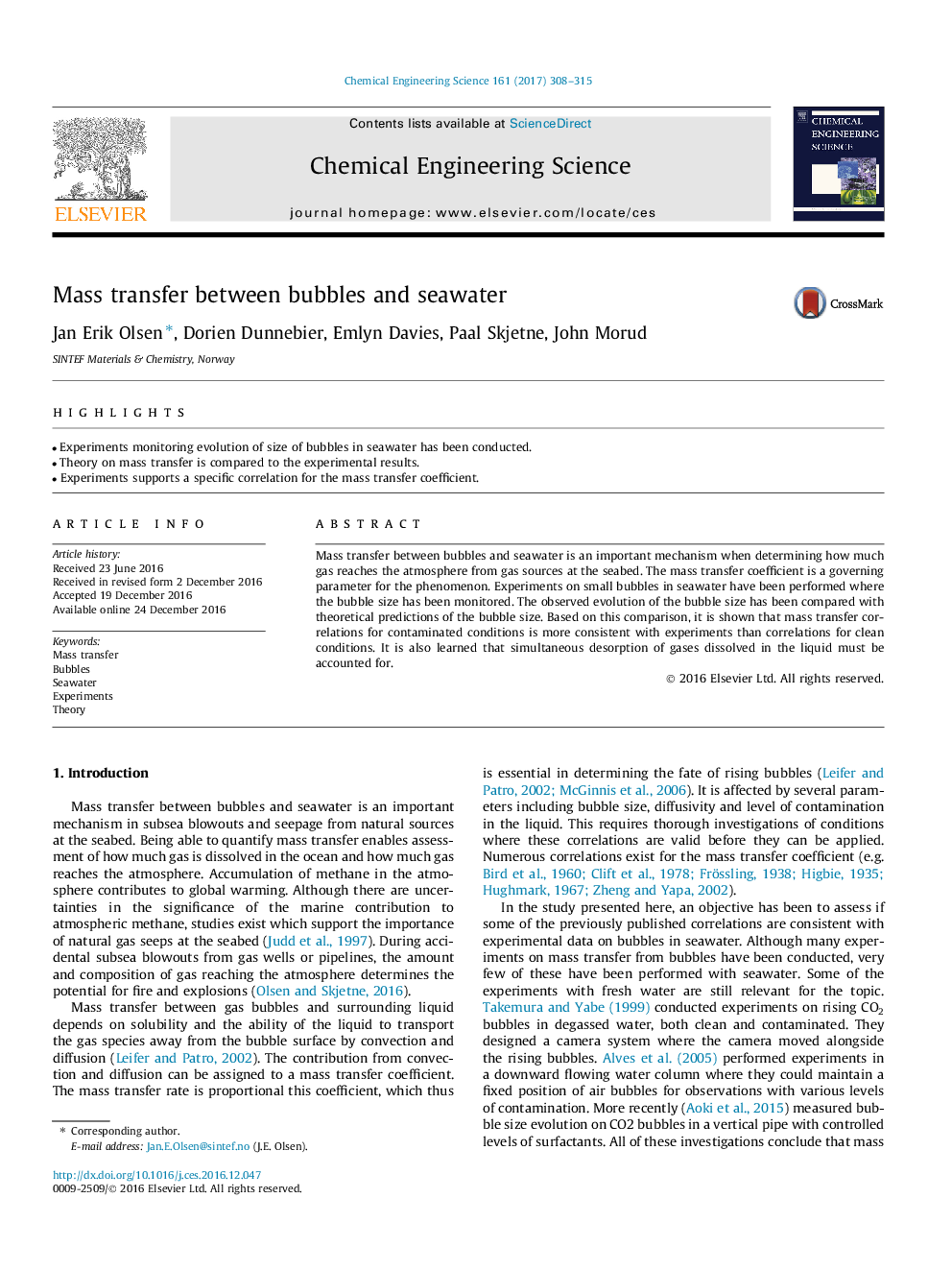| Article ID | Journal | Published Year | Pages | File Type |
|---|---|---|---|---|
| 6467556 | Chemical Engineering Science | 2017 | 8 Pages |
â¢Experiments monitoring evolution of size of bubbles in seawater has been conducted.â¢Theory on mass transfer is compared to the experimental results.â¢Experiments supports a specific correlation for the mass transfer coefficient.
Mass transfer between bubbles and seawater is an important mechanism when determining how much gas reaches the atmosphere from gas sources at the seabed. The mass transfer coefficient is a governing parameter for the phenomenon. Experiments on small bubbles in seawater have been performed where the bubble size has been monitored. The observed evolution of the bubble size has been compared with theoretical predictions of the bubble size. Based on this comparison, it is shown that mass transfer correlations for contaminated conditions is more consistent with experiments than correlations for clean conditions. It is also learned that simultaneous desorption of gases dissolved in the liquid must be accounted for.
